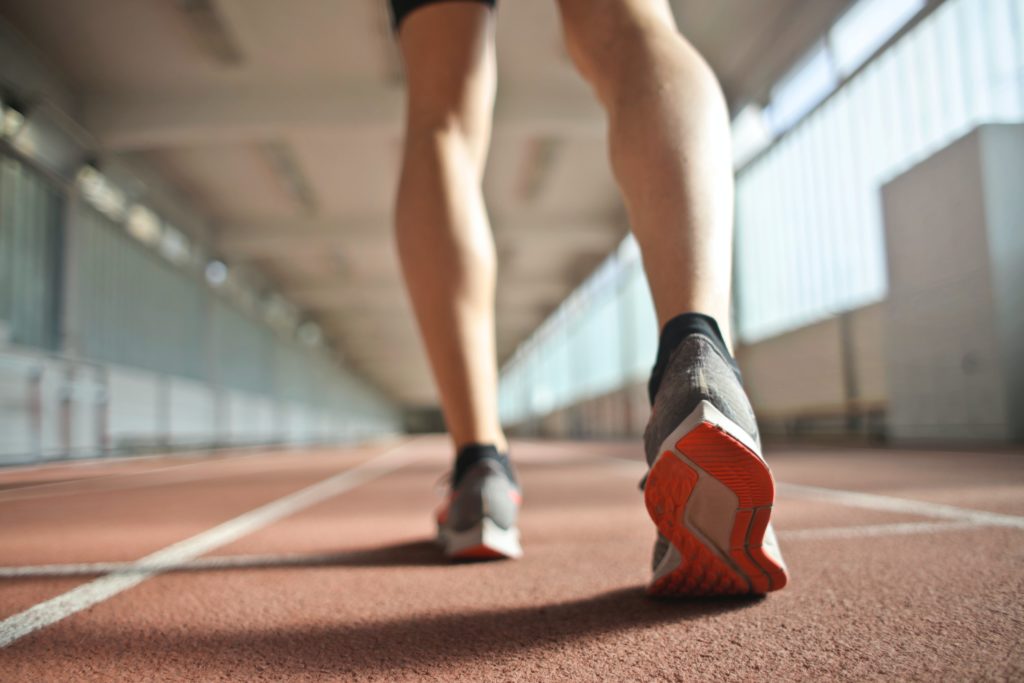Types of Running Shoes
As a personal trainer with a clientele of avid runners, I often find myself talking about the importance of choosing the right shoe in the pursuit of their goals. While there are many athletic shoe options available, picking the right types of running shoes is a necessity for runners of all levels, from 5K enthusiasts to seasoned marathoners.

Why Running Shoes, Not Others?
If you occasionally run a short distance, like a 5K, you may choose to wear cross-trainers. They are designed to be an all-purpose shoe that can be worn when lifting weights, doing cardio in the gym, or going on a short run. However, beyond this, there are compelling reasons you should invest in a pair of proper running shoes.
Enhanced Cushioning: the repetitive impact of running requires ample cushioning to absorb shock and protect joints from excessive stress. Running shoes incorporate advanced cushioning technologies, such as foam midsoles and gel inserts, to provide optimal shock absorption.
Optimized Support: running involves complex foot movements, including pronation (inward rolling) and supination (outward rolling). Running shoes offer tailored support structures, such as stability posts and arch supports, to guide and stabilize foot motion, reducing the risk of injuries.
Lightweight and Breathable: to minimize fatigue and enhance agility, running shoes are designed to be lightweight and breathable. They utilize lightweight materials and mesh uppers to facilitate ventilation, keeping feet cool and comfortable during intense activity.
Durable Outsoles: the outsoles of running shoes are constructed from durable materials, such as rubber or carbon fiber, to withstand the wear and tear associated with repeated ground contact. They provide reliable traction and grip on various surfaces.
Stylistic Variations
Running shoes come in a range of styles to cater to individual preferences and specific needs.
Neutral: designed for runners with neutral pronation, these shoes offer a balance of cushioning and support without excessive motion control features.
Stability: these shoes provide additional medial support for runners who overpronate, reducing inward foot roll and enhancing stability.
Motion Control: intended for runners with severe overpronation, motion control shoes offer maximum support and stability to correct excessive foot motion.
Types for Different Surfaces
Specialized running shoes are available for different running surfaces.
Road Running Shoes: designed for pavement and asphalt, these shoes prioritize cushioning, support, and durability.
Trail Running Shoes: engineered for off-road terrain, trail running shoes feature rugged outsoles for enhanced traction, reinforced uppers for protection, and often incorporate waterproofing for wet conditions.
Minimalist Shoes: these shoes mimic barefoot running with minimal cushioning and support, promoting natural foot movement and strengthening.
When to Replace
The lifespan of running shoes varies depending on usage and factors such as running style, surface, and body weight. As a general rule, it’s recommended to replace running shoes after 300-500 miles of use. However, this isn’t a steadfast rule. There are other indicators of wear also.
Visible Damage: holes, tears, or excessive wear on the outsole or upper.
Reduced Cushioning: a noticeable decline in shock absorption and comfort. This will occur sooner with people who run “heavy”.
Asymmetrical Wear: uneven wear patterns on the outsole can indicate misalignment or biomechanical issues, such as those who pronate.
Pain or Discomfort: experiencing any pain or discomfort while running can signal worn-out shoes.
Investing in the right running shoes is crucial for all runners, regardless of distance or running frequency. Choose the the types of running shoes that best fit your goals and your preferences.


